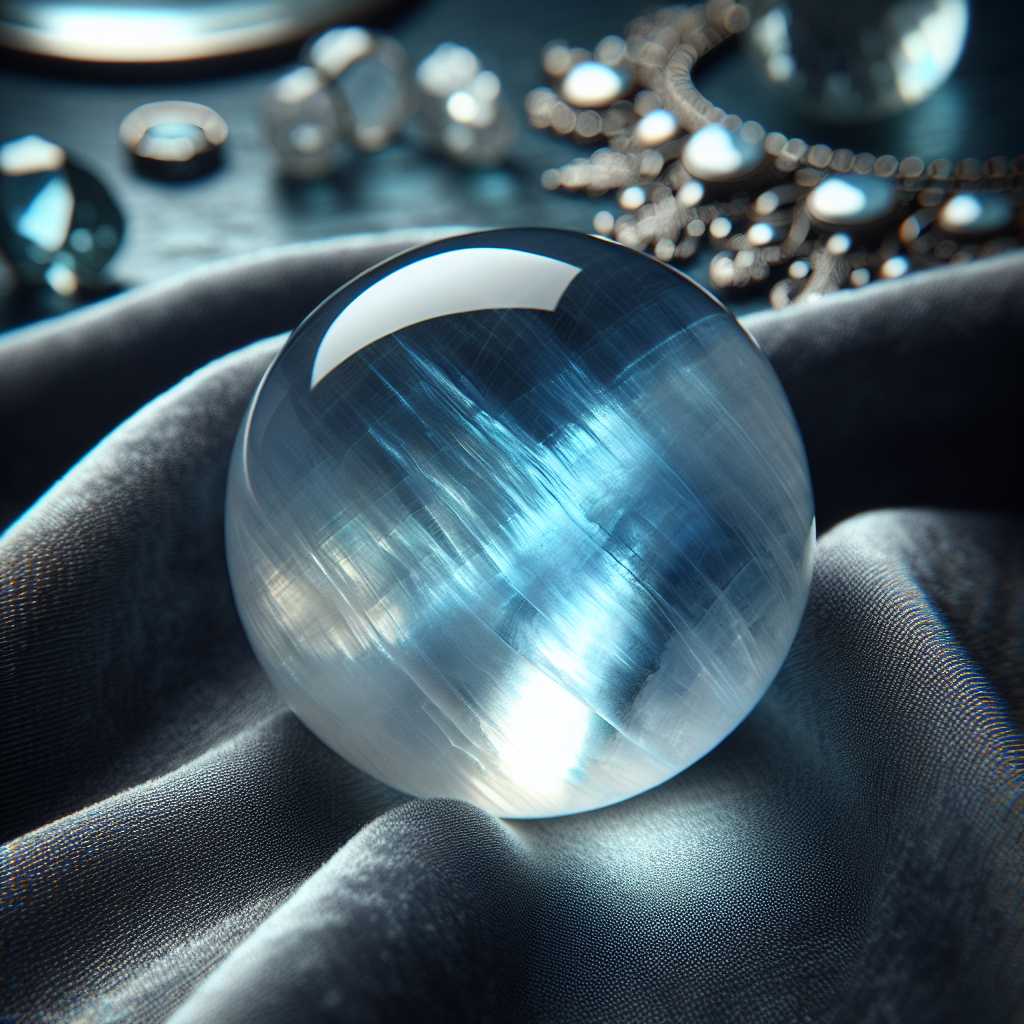Example Article
Introduction to Moonstone and Its Unique Qualities
Moonstone, a captivating gemstone renowned for its ethereal glow, has fascinated cultures around the world for centuries. Unlike Opalite, which is a man-made glass often mistaken for natural stones, moonstone is a naturally occurring feldspar mineral. It derives its name from its pearly and opalescent schiller — a sheen that appears to move as the stone is viewed from different angles, often described as an inner moonlight or adularescence.
This unique optical phenomenon is caused by light diffraction within the layers of the mineral’s structure, giving moonstone its signature luminescence. While commonly found in white or colourless forms with a bluish sheen, moonstones also come in peach, grey, green and brown hues. This diversity adds to its allure among gem enthusiasts and jewellery designers.
Moonstone’s mystique is not only linked to its physical beauty but also to the rich folklore surrounding it. Many cultures have attributed magical properties to moonstone, claiming it brings emotional balance, enhances intuition and offers protection during travel. This legacy continues to influence how moonstone is perceived in modern holistic and metaphysical circles.
Geological Origins and Mining Locations
Moonstone belongs to the feldspar group of minerals, which constitute about 60% of the Earth’s crust. Its formation occurs under specific geological conditions when orthoclase and albite feldspar intergrow in thin layers during cooling of molten rock. The interplay of these layers creates the diffraction effect that produces adularescence.
Major sources of high-quality moonstone include Sri Lanka, India, Myanmar and Madagascar. Sri Lankan moonstones are particularly prized for their intense blue shimmer and clarity. In contrast, Indian moonstones tend to exhibit a more subtle sheen with warm beige or peach tones.
Mining moonstone presents challenges due to its fragile nature; it cleaves easily along planes within its crystalline structure. Miners must exercise great care during extraction to preserve the gem’s integrity. Ethical mining practices are becoming increasingly important within the industry to ensure sustainability and fair labour conditions.
Comparing Moonstone with Opalite: Natural vs Artificial
While both moonstone and opalite share visual similarities — notably their translucent qualities and soft glow — their origins set them distinctly apart. Opalite is a synthetic material created from glass or resin designed to mimic the appearance of natural stones like moonstone or opal.
Opalite’s consistent clarity and uniform glow make it popular in fashion jewellery at affordable prices. However, it lacks the complex internal structures that give natural moonstone its depth and shifting shimmer. Additionally, opalite does not exhibit true adularescence but rather an iridescent glow caused by light refraction through smooth glass surfaces.
For collectors, connoisseurs and those seeking metaphysical benefits traditionally linked with gemstones, moonstone holds greater value due to its authenticity and natural origin. Yet opalite remains appreciated for its accessibility and aesthetic appeal in contemporary design.
Cultural Significance and Modern Applications
Moonstone has been revered since ancient times; Romans believed it was formed from solidified rays of the Moon, while Hindus considered it a sacred stone bringing good fortune. In modern crystal healing practices, moonstone is associated with feminine energy, emotional healing and enhancing creativity.
Beyond spiritual uses, moonstone has found its place in luxury jewellery markets where artisans craft rings, pendants and earrings that highlight its luminous qualities. Designers often pair moonstone with silver or white gold to complement its cool-toned sheen.
Technological advances have also enabled more precise cutting techniques that maximise adularescence without compromising durability. This fusion of tradition and innovation ensures moonstone remains relevant both as a cultural icon and a sought-after gemstone.
Conclusion: Embracing Nature’s Light Within Stone
Moonstone stands apart as a gemstone that embodies both natural wonder and cultural richness. Its soft glow offers not only aesthetic pleasure but also a connection to ancient beliefs about lunar energy and emotional balance. While synthetic counterparts like opalite provide accessible alternatives for decorative purposes, they cannot replicate the layered complexity born of geological time.
Understanding the origins, qualities and significance of moonstone enriches our appreciation for this mystical gem beyond mere appearance. Whether worn as jewellery or treasured as a talisman, moonstone invites us to embrace light within darkness — a timeless symbol of hope and transformation.
Notes
- Moonstone exhibits adularescence caused by light diffraction within microscopic layers.
- Sri Lanka is famous for producing some of the highest quality blue-shimmering moonstones.
- Opalite is a man-made glass material designed to imitate natural gemstones like moonstone.
- Moonstone has been historically linked to lunar deities across multiple cultures.

